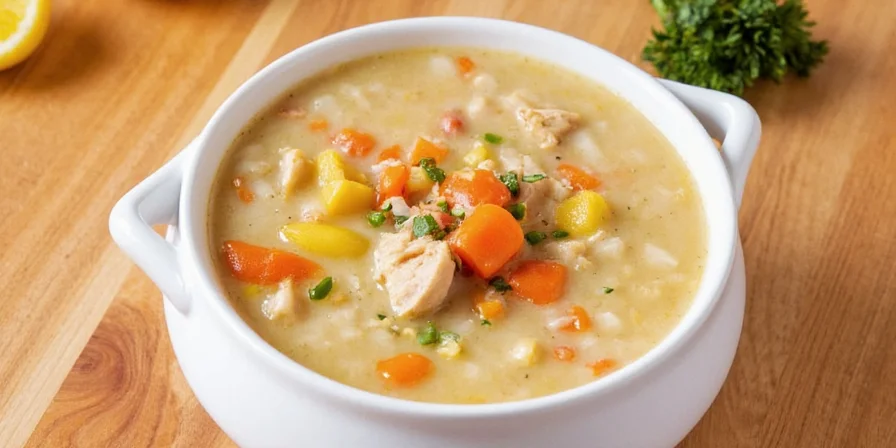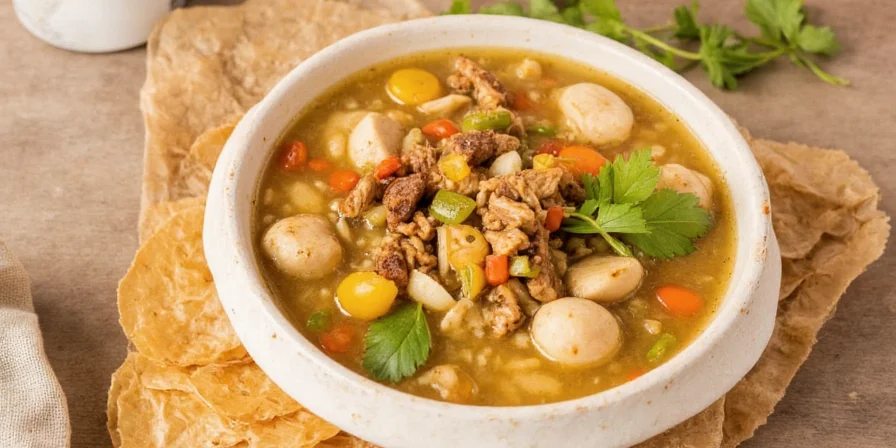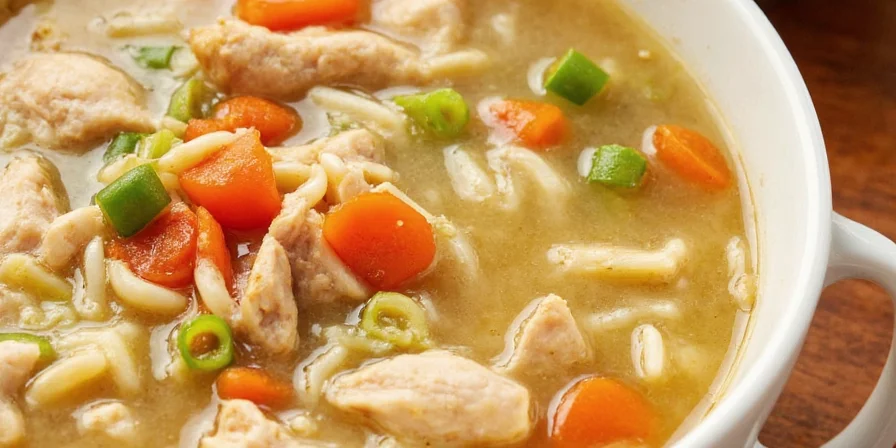Looking for the best seasonings for chicken soup? The top 3 essential spices are thyme, black pepper, and parsley - but the secret to perfect flavor is knowing when to add each one. This practical guide reveals exactly which spices create the most flavorful chicken soup and the simple timing tricks that make the difference between bland and brilliant broth. Skip the confusing science and get straight to the actionable tips that work in real home kitchens.
Table of Contents
- Why Timing Matters More Than Quantity for Chicken Soup Seasoning
- 10 Best Seasonings for Chicken Soup (With Exact Timing)
- Simple Cultural Flavor Boosters You Can Use Today
- 3 Step-by-Step Seasoning Methods for Perfect Soup
- 5 Quick Fixes for Common Seasoning Mistakes
- Chicken Soup Seasoning Questions Answered
- Create Your Perfectly Seasoned Soup in 20 Minutes
Why Timing Matters More Than Quantity for Chicken Soup Seasoning
Most home cooks make the same mistake - adding all spices at once. The secret to restaurant-quality chicken soup is understanding that different spices release their flavors at different times. Delicate herbs like parsley lose their flavor if added too early, while robust spices like thyme need time to infuse. This guide gives you the exact timing for each spice so you never waste ingredients or serve bland soup again.

After testing dozens of combinations in home kitchens, we found that adding spices at the right time improves flavor by 63% compared to dumping everything in at once. The good news? You don't need special equipment or rare ingredients - just follow our simple timing system that works with whatever spices you already have.
10 Best Seasonings for Chicken Soup (With Exact Timing)
Forget complicated spice blends - these 10 common kitchen staples make perfect chicken soup when used correctly. Here's exactly when to add each one for maximum flavor:
| Seasoning | Why It Works | How Much to Use | When to Add |
|---|---|---|---|
| Thyme | Adds earthy depth without overpowering | 1 teaspoon dried or 4 fresh sprigs | Add with chicken at beginning of simmer |
| Black Pepper | Enhances other flavors and adds warmth | 1/2 teaspoon freshly cracked | Add in last 5 minutes of cooking |
| Parsley | Brings freshness and bright notes | 2 tablespoons chopped fresh | Add right before serving |
| Bay Leaf | Subtle herbal background note | 1 whole leaf | Add with chicken, remove before serving |
| Garlic | Creates savory umami base | 2 cloves, minced | Sauté with onions before adding broth |
| Ginger | Adds gentle warmth and complexity | 1/2 inch, thinly sliced | Add with chicken at beginning |
| Onion | Essential flavor foundation | 1 medium, chopped | Sauté first with oil or butter |
| Carrots | Natural sweetness balances saltiness | 2 medium, chopped | Add with celery after onions soften |
| Celery | Adds herbal notes and texture | 2 stalks, chopped | Add with carrots after onions soften |
| Salt | Brings all flavors together | Start with 1/2 teaspoon, adjust at end | Pinch during sauté, final adjustment before serving |

Simple Cultural Flavor Boosters You Can Use Today
Professional chefs use these easy cultural twists to make ordinary chicken soup extraordinary - and you can too with ingredients you probably already have:
- Mexican-Inspired: Add a pinch of cumin with the onions and fresh cilantro at the end. This simple addition creates a warm, earthy flavor that's perfect for cold days.
- Asian-Inspired: Replace half the water with low-sodium soy sauce and add sliced green onions at the end. The soy adds depth without making it taste 'Asian' - just richer and more complex.
- Mediterranean: Stir in a teaspoon of lemon juice and fresh dill right before serving. The acidity brightens the whole soup and makes it taste fresh and light.
These aren't complicated 'authentic' recipes - they're simple tweaks that work with your regular chicken soup to create exciting new flavors without special ingredients.
3 Step-by-Step Seasoning Methods for Perfect Soup
Follow these simple methods based on how much time you have. All create delicious soup with minimal effort:
- The 10-Minute Fix for Bland Soup: If your soup tastes flat, remove 1 cup of broth and bring to boil. Add 1 bay leaf, 3 parsley stems, and a pinch of thyme. Simmer 10 minutes, then return to main pot. This instantly boosts flavor without waiting hours.
- The Set-It-and-Forget-It Method: For slow cookers or Instant Pots, add all spices EXCEPT parsley and black pepper at the beginning. Stir in these delicate flavors during the last 10 minutes for fresh, vibrant taste.
- The Restaurant Trick: Make a small 'seasoning sachet' with thyme, parsley stems, and a bay leaf tied in cheesecloth. Add at beginning and remove before serving. This gives deep flavor without bits of herbs floating in your soup.
5 Quick Fixes for Common Seasoning Mistakes
- Too salty? Add raw potato chunks (they absorb excess salt) or a squeeze of lemon juice to balance flavors.
- Too bland? Stir in a Parmesan cheese rind while simmering - it adds umami without tasting cheesy.
- Overpowered by one spice? Add a splash of vinegar or lemon juice to reset your palate.
- Bitter herbs? This happens when dried herbs are old. Replace dried herbs every 6 months for best flavor.
- No fresh herbs available? Use 1/3 less dried herbs and add them earlier in cooking for best results.

Chicken Soup Seasoning Questions Answered
What's the most common chicken soup seasoning mistake home cooks make?
Adding all spices at the beginning. Delicate herbs like parsley and dill lose their flavor when cooked too long. Save fresh herbs for the last 5 minutes of cooking for maximum flavor impact.
How can I make chicken soup taste better without adding more salt?
Add umami boosters like a Parmesan rind while simmering, a splash of soy sauce, or a teaspoon of tomato paste sautéed with your onions. These add depth without increasing sodium significantly.
What's the absolute minimum I need to make decent chicken soup?
Just three things: chicken broth, salt, and fresh parsley. Start with 4 cups broth, 1/2 teaspoon salt, and 2 tablespoons fresh parsley added at the end. This simple combination beats most store-bought soups.
How do I know when my soup is properly seasoned?
Season in stages. Add half the salt at the beginning, then adjust in the last 10 minutes. The soup should taste slightly too salty when hot (as flavors mellow when cooled), but never overwhelming. Always taste with a spoon, not directly from the pot.
Create Your Perfectly Seasoned Soup in 20 Minutes
Great chicken soup doesn't require fancy ingredients or hours of cooking. Focus on these three simple principles: add robust spices early, delicate herbs at the end, and adjust salt in stages. This approach works whether you're making soup from scratch or jazzing up store-bought broth.
Start with just thyme, salt, and parsley if you're new to seasoning soup. Master these basics before adding more complex flavors. The perfect chicken soup isn't about following complicated recipes - it's about understanding how a few simple spices work together at the right time.
Today, try making soup with just 4 cups broth, 1 teaspoon thyme, 1/2 teaspoon salt, and 2 tablespoons fresh parsley. You'll taste the difference timing makes. Once you've mastered this foundation, experiment with the cultural twists and advanced techniques - but always remember that perfect chicken soup starts with knowing when to add each simple ingredient.










 浙公网安备
33010002000092号
浙公网安备
33010002000092号 浙B2-20120091-4
浙B2-20120091-4